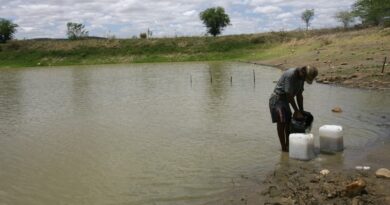Swedish-Indian collaboration develops tech to remove dye pollutants in wastewater

A new wood-based technology developed in Sweden in collaboration with an Indian institute has the potential to remove 80 per cent of dye pollutants in wastewater, a breakthrough that could have positive implications for countries with poor water treatment technologies.
A team of researchers led by Gunnar Westman, Associate Professor of Organic Chemistry at Chalmers University of Technology, Sweden, has developed a new method that can easily purify contaminated water using a cellulose-based material. This discovery could help combat the widespread problem of toxic dye discharge from the textile industry.
The team focus was on new uses for cellulose and wood-based products and is part of the Wallenberg Wood Science Center.
The researchers have built up solid knowledge about cellulose nanocrystals – tiny nanoparticles that have an outstanding adsorption capacity – and found a way to utilise them.
“We have taken a unique holistic approach to these cellulose nanocrystals, examining their properties and potential applications. We have now created a biobased material, a form of cellulose powder with excellent purification properties that we can adapt and modify depending on the types of pollutants to be removed,” said Westman.
In a study recently published in the scientific journal Industrial & Engineering Chemistry Research, the researchers show how toxic dyes can be filtered out of wastewater using the method and material developed by the group. The research was conducted in collaboration with the Jaipur-based Malaviya National Institute of Technology in India, where dye pollutants in textile industry wastewater are a widespread problem.
The treatment requires neither pressure nor heat and uses sunlight to catalyse the process. Westman likens the method to pouring raspberry juice into a glass with grains of rice, which soak up the juice to make the water transparent again.
“Imagine a simple purification system, like a portable box connected to the sewage pipe. As the contaminated water passes through the cellulose powder filter, the pollutants are absorbed and the sunlight entering the treatment system causes them to break down quickly and efficiently. It is a cost-effective and simple system to set up and use, and we see that it could be of great benefit in countries that currently have poor or non-existent water treatment”, he said.
The new method will be tested in India, one of the developing countries in Asia with extensive textile production, where large amounts of dyes are released into lakes, rivers and streams every year. The consequences for humans and the environment are serious.
Water contaminant contains dyes and heavy metals and can cause skin damage with direct contact and increase the risk of cancer and organ damage when they enter into the food chain. Additionally, nature is affected in several ways, including the impairment of photosynthesis and plant growth.
Conducting field studies in India is an important next step, and the Chalmers researchers are now supporting their Indian colleagues in their efforts to get some of the country’s small-scale industries to test the method in reality. So far, laboratory tests with industrial water have shown that more than 80 per cent of the dye pollutants are removed with the new method, and Westman sees good opportunities to further increase the degree of purification.
“Going from discharging completely untreated water to removing 80 per cent of the pollutants is a huge improvement, and means significantly less destruction of nature and harm to humans. In addition, by optimising the pH and treatment time, we see an opportunity to further improve the process so that we can produce both irrigation and drinking water. It would be fantastic if we can help these industries to get a water treatment system that works, so that people in the surrounding area can use the water without risking their health”, he said.
Westman also sees great opportunities to use cellulose nanocrystals for the treatment of other water pollutants than dyes. In a previous study, the research group has shown that pollutants of toxic hexavalent chromium, which is common in wastewater from mining, leather and metal industries, could be successfully removed with a similar type of cellulose-based material. The group is also exploring how the research area can contribute to the purification of antibiotic residues.
“There is great potential to find good water purification opportunities with this material, and in addition to the basic knowledge we have built up at Chalmers, an important key to success is the collective expertise available at the Wallenberg Wood Science Center”, he said.


